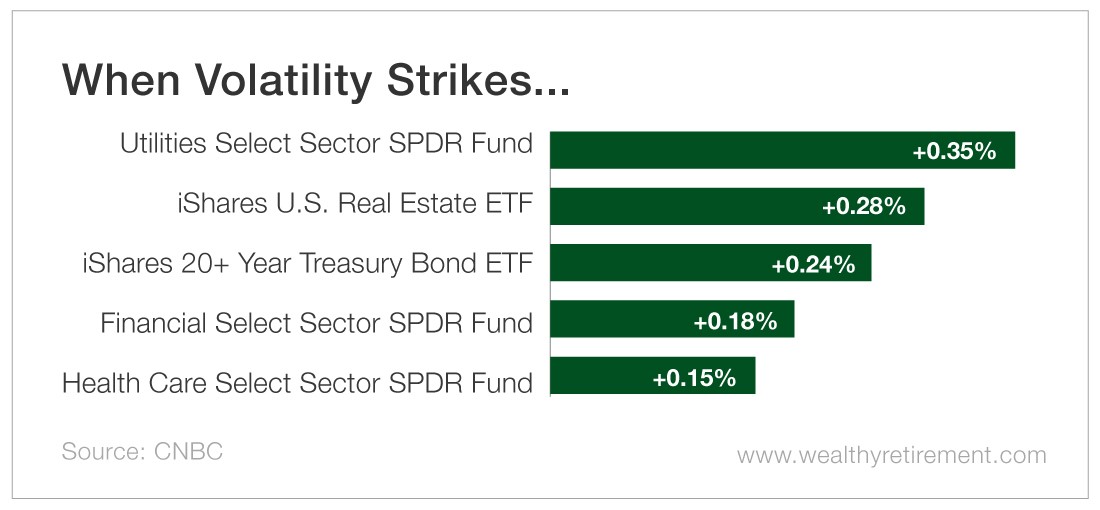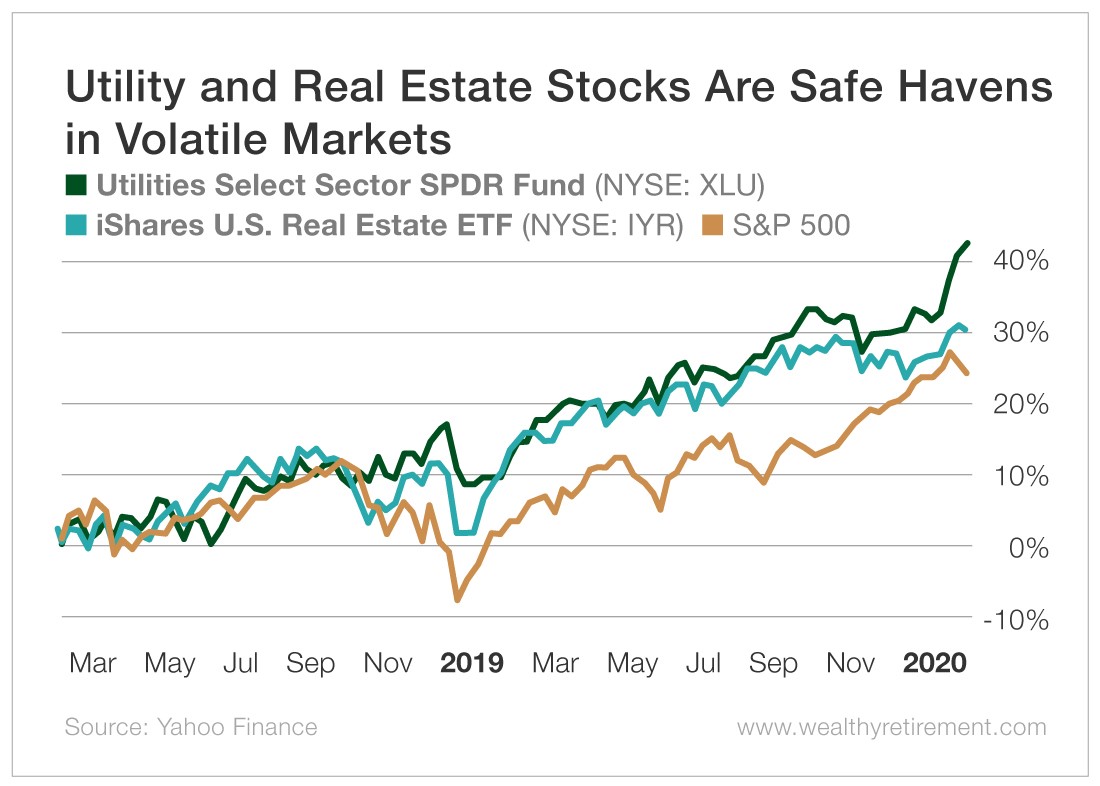A Note From Chief Income Strategist Marc Lichtenfeld: Today I want to share some important findings with you from Anthony Summers, Senior Research Analyst at The Oxford Club.
With market stressors like Brexit and coronavirus throwing the market for a loop last week, we wanted to identify today’s most volatility-proof opportunities for my readers.
And Anthony’s findings echo what I’ve been pounding the table about for years – the importance of turning to reliable dividend payers in any market, but especially a correction.
Read on below to discover how you can keep your portfolio grounded – and keep your cool – the next time headlines send the market into a tailspin.
Volatility is a scary word for many investors.
Many view volatility as a good gauge of fear since fear can cause volatility in markets. You can see this by observing how volatility has spiked in the past as CNN’s Fear & Greed Index shifted from “neutral” to “extreme fear.”
But volatility could also be an opportunity if you’re looking in the right place.
Recently, CNBC studied the performance of various exchange-traded funds (ETFs) after spikes in volatility, as indicated by the CBOE Volatility Index (VIX) surpassing 15.
The study found, unsurprisingly, that utilities dominated other sectors of the market during these periods.
This fits the investor narrative perfectly. The utilities sector is considered one of the safest and least volatile sectors of the market.
When investors are uncertain, many rush to cash, bonds and even precious metals. But many also shift their capital into utilities and stable dividend payers.
Think about Monday’s minor sell-off in response to the novel coronavirus.
As the market fell 0.37% between market open and 11 a.m., utilities, as tracked by the Dow Jones U.S. Utilities Index (DJUSUT), proved very resilient.
This index actually gained over a 24-hour period, while the S&P finished down 0.78%.
Utilities are also attractive in volatile periods because of their competitive yields.
Thirty-year Treasurys, which, under normal conditions, should offer the highest interest rates, are offering a current yield of about 2.06%.
That’s only slightly higher than the S&P 500’s last reported dividend yield of 1.80%.
Compare that with utilities’ average dividend yield of 3.47%, and you can see why utilities become so attractive during times like these.
But the utilities sector isn’t the only one sporting gains in the midst of volatility.
The iShares U.S. Real Estate ETF (NYSE: IYR), which tracks the performance of both real estate companies and real estate investment trusts, has also gained over the past two months.
At points, it was even outperforming utilities as measured by the Utilities Select Sector SPDR Fund (NYSE: XLU).
Like utilities, the real estate sector offers price stability and higher yields than most stocks on the market.
In fact, the iShares U.S. Real Estate ETF has a current distribution yield of 3.05%, which is close to the average yield offered by utilities.
Real estate also has the added bonus of being less correlated to stocks than other sectors, giving it another buffer to resist stock market volatility.
Volatility may be an unpleasant result of fear-driven market behavior. But that doesn’t mean you should start acting out of fear too.
Instead, try to make the best of volatility spikes as they appear and consider leveraging these sectors’ gains to pad your portfolio’s performance.
Good investing,
Anthony


